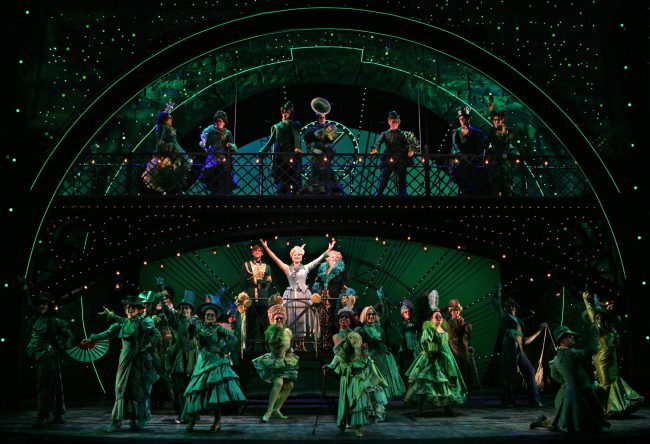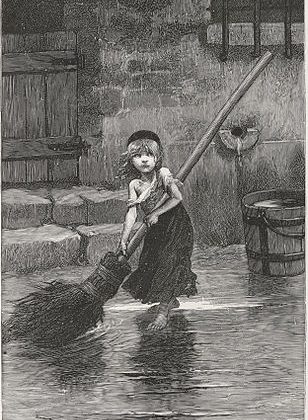Most people know what the role of a director, performer, or stage manager entails, but when it comes to swings, there are loads of people who still don’t know what they do! Swings are the backbone of theatre. These triple-threats are ready at a moment’s notice to take the spotlight and keep a production running.
So, What Does a Swing Do?
A swing is a performer that covers any number of tracks in a production, ready to jump into any of the roles they cover at a moment’s notice. A swing will usually be a role in the ensemble and perform another track if a cast member is out of the show due to illness/holidays/emergencies. If they are an off-stage swing, they will not perform in the show unless they are covering for another performer.
A swing will cover ensemble and/or principal tracks, sometimes as many as 12! It takes a special type of performer to be a great swing – with a multitude of positions, lines, and harmonies swimming through their heads, it’s not an easy task to swing a show! Swings may have very short notice before going on for one of their tracks, which keeps them on their toes for every performance. For this reason, swings must keep up every single one of their tracks and make sure they are performance ready at all times.

Swing vs Standby vs Understudy: What’s the Difference?
You may have heard these terms and think they are interchangeable, but each position has its own role within a show. A standby is a performer who is off-stage, usually covering only one leading role. A standby only goes onstage if the performer who’s role they cover is off, and never has guaranteed show dates. Shows with huge roles such as Elphaba and Glinda in Wicked have standbys in case the main actor is unable to perform. Many standbys for Elphaba have gone on to play the leading role, such as Shoshana Bean, Caissie Levy, and Eden Espinosa!
Some roles have alternates, which is a performer who covers a leading role and has guaranteed show dates. Christine Daae in The Phantom of the Opera and Tina in Tina: the Tina Turner Musical are examples where the leading role has an alternate performer. These are very demanding roles and the alternate will usually perform for one of the matinees and/or one evening show in a week.
An understudy is the role you might be most familiar with. An understudy is a cast member who performs in every show, usually as a member of the ensemble. They will learn a larger role and go on for that role if the main actor is unable to. When understudies are performing as their larger role, a swing will cover their ensemble track. For an in-depth look into the life of an understudy, check out this behind-the-scenes video of an understudy in Wicked.
And finally, a Super Swing (also called a universal swing) is someone who can be called in from anywhere in the country (or even the world!) to step into a role. This is usually an actor who is a former cast member of a long running show or a cast member from another production of the same show. In Six, a super swing covers all 6 of the queens and is called in to perform if the First Cover Alternate is unavailable.
In January 2024, British actress Jessica Daley traveled more than 150 miles across the UK to save a performance of the musical Evita at Leicester’s Curve Theatre after both the leading lady and her understudy became ill. She last played the role in 2019 and had just hours notice before stepping on stage!
What Does it Take to be a Swing?
Swings are some of the most talented performers you will find. These triple-threats must have the skills to dance in an ensemble, carry dialogue in scenes, and belt out all the big notes. Not only does swinging take a lot of talent, it also takes a lot of emotional resilience. It’s a huge responsibility to take on multiple roles in one show and can be incredibly stressful to dive into a track with short notice.
Learning all of the material is only half the battle. Once the material is in your brain, it takes a lot of personal practice, memorization, and muscle memory to keep up all the tracks. Swings don’t usually get the luxury of rehearsing their roles with the rest of the main cast and often, swings have very few rehearsals before having to perform their tracks in front of an audience. In some cases, a swing will perform a “split track”, in which they are covering multiple cast members’ roles at the same time! Check out this video of a performer in Disney’’s Frozen as they go through a put-in rehearsal, where swings and understudies get to run their roles onstage.
Swings are the glue that hold a production together. They are the reason that shows can continue through cast illness/holidays/emergencies. Lots of Broadway and West End stars also started their career as swings, such as Karen Olivo, who started as a swing in Rent; Jeremy Jordan, who performed in Rock of Ages as a swing; and Donna Murphy, who started as a swing in They’re Playing Our Song. While the role of a swing is a very challenging one, it is also super rewarding. Next time you see the role of “Swing” listed beside a performer in a program, give them an extra loud cheer for all their hard work!














